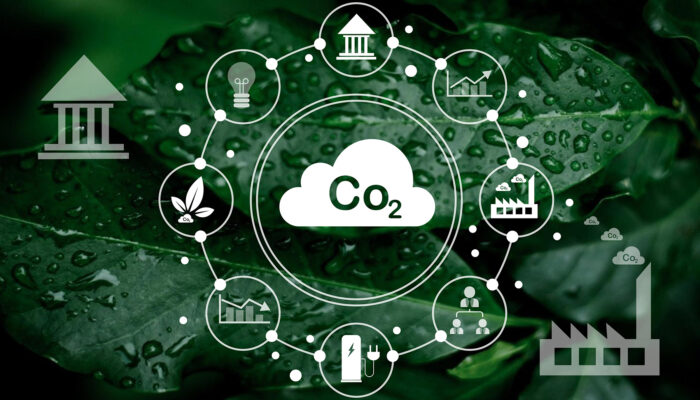As the race towards sustainability accelerates, electric vehicles (EVs) have emerged as a compelling alternative to replace environmentally harmful gas-guzzling cars. Yet, a closer examination of the environmental impact of EVs unveils a paradox within this green transition.
The production of batteries, the lifeblood of electric vehicles, has a massive environmental impact. It involves a significant allocation of resources, many of them scarce. The destructive practices employed while extracting these resources result in habitat destruction, soil pollution, and water contamination, posing a substantial environmental burden. According to Reuters data, a typical EV requires approximately one year of operation to achieve carbon parity with a gasoline vehicle. A Tesla must drive about 21,725 kilometres to become more environmentally friendly than a gasoline-powered vehicle in the US.[1] This calculation takes into account the fact that a quarter of US energy comes from coal. The comparative threshold is lower in certain parts of Europe but higher in coal-dependent countries like Australia.
Compounding these environmental concerns is that only 5% of lithium-ion batteries get recycled annually and current recycling methods come with their own environmental challenges.[2] With EV sales poised to reach a record-breaking 14 million in 2023 and demand projected to continue rising, we lack the resources to manufacture batteries for this many EVs.[3] A sustainable recycling ecosystem that can improve battery recycling and reusability is critical to realise the full environmental benefits of the EV transition.
Optimising the battery ecosystem
Traditional lithium-ion battery (LIB) recycling methods involve harsh chemicals and energy-intensive processes, raising significant environmental concerns due to the potential for contamination and pollution. These methods are also often costly and fail to recover all the valuable materials from spent LIBs, leading to resource depletion. As demand for lithium-ion batteries surges, this will become increasingly problematic. Several innovative companies have emerged with more sustainable solutions to tackle these challenges.
Blue Whale Materials has emerged as a pioneer in sustainable Li-ion recycling, providing solutions to reclaim and responsibly supply critical materials for the expanding electrified economy. At the heart of Blue Whale Materials’ approach lies its proprietary Blacksand technology, an innovative recycling process that grinds spent Li-ion batteries into an intermediate high-purity material (Blacksand) containing valuable metals like lithium, cobalt, and nickel. This dry Blacksand gets refined into pure cobalt, lithium, and nickel and manufactured into new Li-ion batteries.
In contrast to conventional wet processes that can complicate subsequent refining stages, the dry Blacksand technology simplifies the recycling process and elevates the quality of the reclaimed materials. In 2022, Blue Whale Materials closed a partnership deal with Ara Partners to build a network of advanced lithium-ion battery (LIB) recycling facilities across the US and Europe. The deal included an $80 million equity commitment to support the buildout.[4]
North Carolina-based Nth Cycle has developed an electro-extraction system for recycling lithium-ion batteries that is a high-tech version of a traditional water filter but for metals. The system extracts valuable metals like cobalt, nickel, and manganese from spent lithium-ion batteries, contributing to a more sustainable supply chain. Last year, Nth Cycle raised $12.5 million in Series A financing, co-led by the investment arm of Frankstahl, one of Europe’s largest privately held steel distribution companies, and VoLo Earth, a Colorado-based venture capital firm.[5] The company also secured a $2.15 million grant from the US Department of Energy (DOE) as part of the Battery Materials and Battery Manufacturing & Recycling Funding Opportunity (BMBMR) program.[6]
Green Li-ion has pioneered a ground-breaking technology that processes all components of spent lithium batteries. This innovative approach recycles 100% of the battery’s valuable metals, directly remanufacturing battery-grade cathode material for new batteries. Green Li-ion uses a licensing model to share its cutting-edge technology and battery recycling machines with battery producers and recyclers Earlier this year, Green Li-ion secured $20.5 million in Pre-Series B funding led by Singapore-based decarbonization venture capital firm TRIREC, bringing the company’s total raised to $36 million.
French battery recycling start-up Mecaware specialises in recycling lithium-ion batteries from two primary sources: end-of-life batteries and production scrap from battery-making factories. Their patented recycling process, based on pioneering advancements in dynamic combinatorial chemistry, harnesses the power of CO2 capture to selectively extract valuable metals like lithium, cobalt, and nickel from spent lithium-ion batteries. This approach enables the recovery of critical metals from lithium-ion batteries in a closed-loop system, minimising the need for new mining and reducing the environmental impact associated with resource extraction.
In a significant boost to its industrial and commercial development, Mecaware recently secured €40 million in funding from a consortium of investors led by Crédit Mutuel Innovation and the SPI2 fund, managed by Bpifrance on behalf of the French state as part of the France 2030 initiative.[7]
US lithium-ion battery recycling company Li Industries has developed an environmentally friendly three-step process that transforms spent lithium-ion batteries into high-purity, reusable battery materials. The technology separates the components from discarded batteries and regenerates cathode and anode waste into commercial-grade materials for reincorporation into new batteries. In 2022, the company secured a Series A funding round of $7 million led by Khosla Ventures, with participation from Shell Ventures and Xerox Ventures.[8]
Building batteries from sustainable alternatives
Lithium-ion batteries rely on a finite supply of cobalt, nickel, and manganese. As the demand for Lithium-ion batteries skyrockets, these resources will face increasing scarcity and higher extraction costs, potentially hindering the widespread adoption of LIB technology. In addition, extracting these materials involves destructive practices, resulting in habitat destruction, soil pollution, and water contamination. The good news is that companies like Gridtential are leading the way in developing batteries from alternative materials that are less rare, have cleaner extraction methods, and offer enhanced recyclability.
Gridtential takes a novel approach to lead-acid batteries, transforming a conventional technology with the power of silicon replacing the lead grid inside a traditional lead battery with a plated silicon wafer similar to a solar cell. The low-cost solution increases the battery’s efficiency and energy density and extends cycle life. It also integrates seamlessly into existing battery manufacturing and recycling infrastructures. Gridtential holds over 70 patents and has raised approximately $28 million in financing since its inception in 2012.[9]
Leveraging advanced software
While EV batteries are often deemed “used” when they attain 70% of their maximum capacity, this threshold doesn’t accurately signify the actual remaining value of these batteries. In fact, degradation typically decelerates beyond this point, and these batteries preserve substantial capacity that manufacturers can repurpose for various applications. By providing advanced battery analytics and management capabilities, software solutions can help extend the lifespan of batteries and optimise the allocation of batteries to their most suitable second-life applications.
Predictive battery analytics software can analyse battery data, including voltage, current, temperature, and charge cycles, to predict each battery’s remaining capacity and lifespan. This data-driven approach allows for more accurate assessments of battery health and performance, enabling informed decisions about battery usage and repurposing.
Software algorithms can also match batteries with suitable second-life applications based on their remaining capacity and performance characteristics. They can facilitate the creation of a battery data marketplace where battery owners can share their data with potential second-life users.
German start-up Circunomics has developed a pioneering battery analytics and second-life marketplace platform that revolutionises how EV batteries are managed and recycled. Their innovative software utilises sophisticated algorithms to analyse battery data, providing real-time insights into the health and performance of each battery. This data-driven approach allows for identifying batteries suitable for second-life applications, such as energy storage systems in homes and businesses. Circunomics recently received an undisclosed investment from ORLEN VC, Poland’s largest corporate venture capital fund.[10]
Circu Li-ion takes a different approach, focusing on battery cell diagnosis. The company is tackling the issue of battery pack failures by employing advanced diagnostic techniques to identify and isolate faulty cells within the pack. By replacing only the damaged cells, Circu Li-ion extends the lifespan of battery packs, reducing the overall need for battery replacements and minimising waste. The Luxembourg-based company recently closed a €8.5 million seed financing round, including €4.5 million in equity and €4 million in grants from the European Innovation Council Accelerator (EICA) and partnerships with recyclers and OEMs. It will use the funds to expand its main production facility in Germany and aims to upcycle three billion batteries by 2035.[11]
Driving a sustainable future for batteries, EVs and the planet
The battery sector is experiencing a surge in investment, with start-ups raising $9.2 billion in the first three quarters of 2023 alone. This momentum is poised to continue into next year, propelled by surging demand for EVs and the introduction of new battery regulations that mandate minimum recycled material levels in all batteries produced by manufacturers.[12] Assuming growth in the battery ecosystem continues at 30% per year[13] and recycling garners more of the attention, we could see fundraising north of $20 billion by the end of 2025.
Ultimately, by ensuring that energy for battery recycling comes from renewable sources, we could reduce CO2 emissions from EVs by 75%, eliminating almost 300 million tonnes (or 1%) of global CO2 annually by 2030 through battery production alone.
Learn more about us.
View our transactions.










